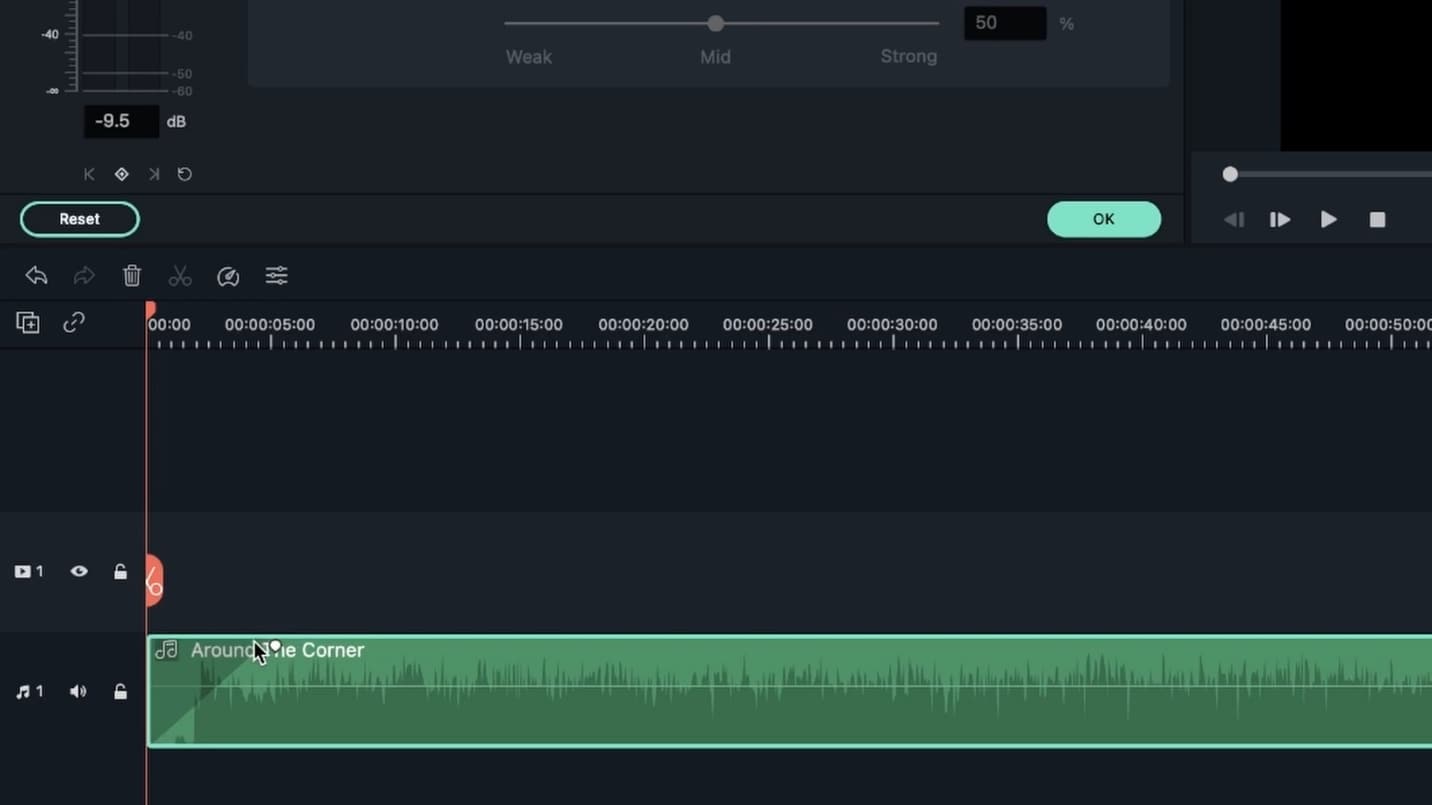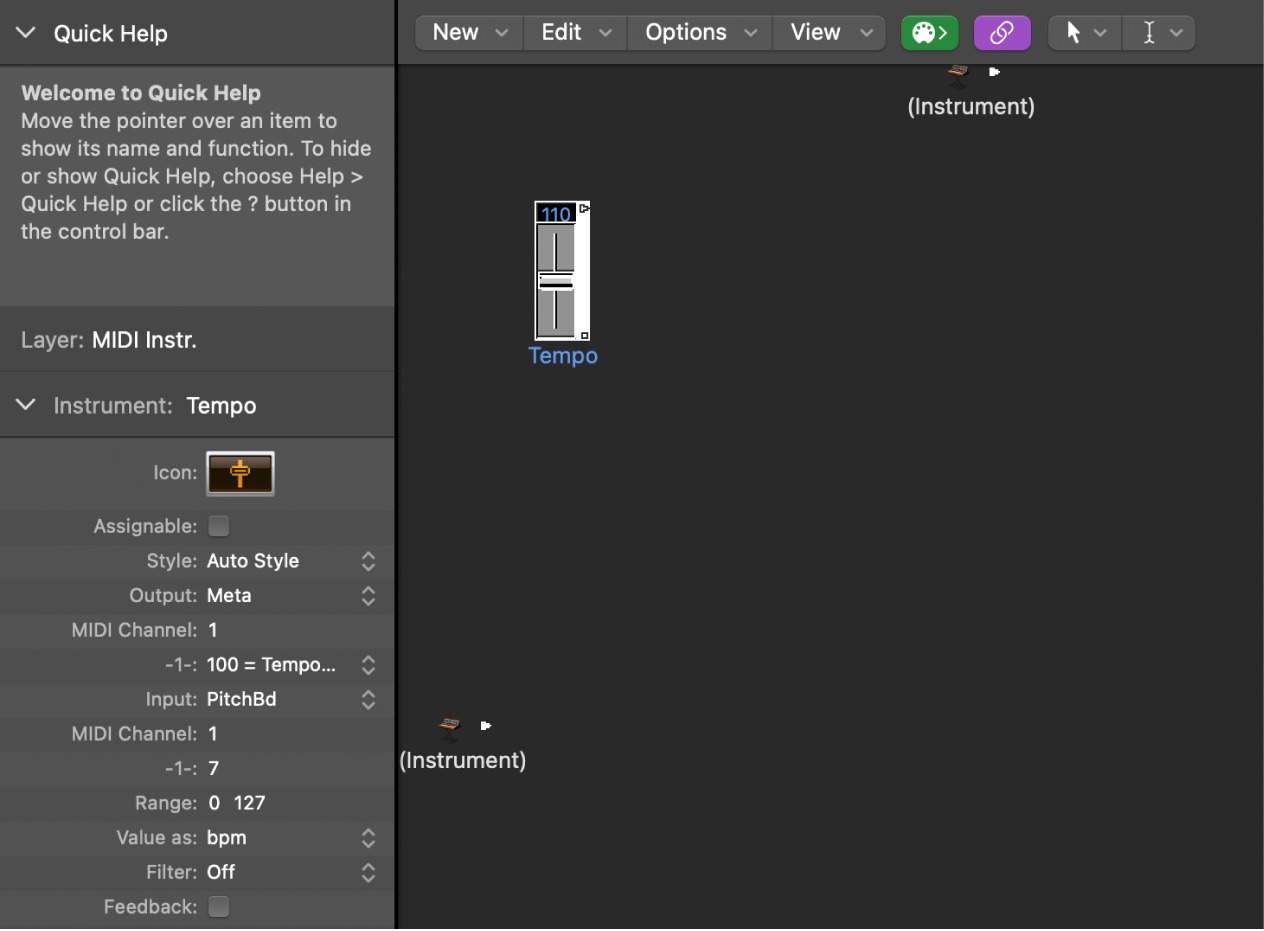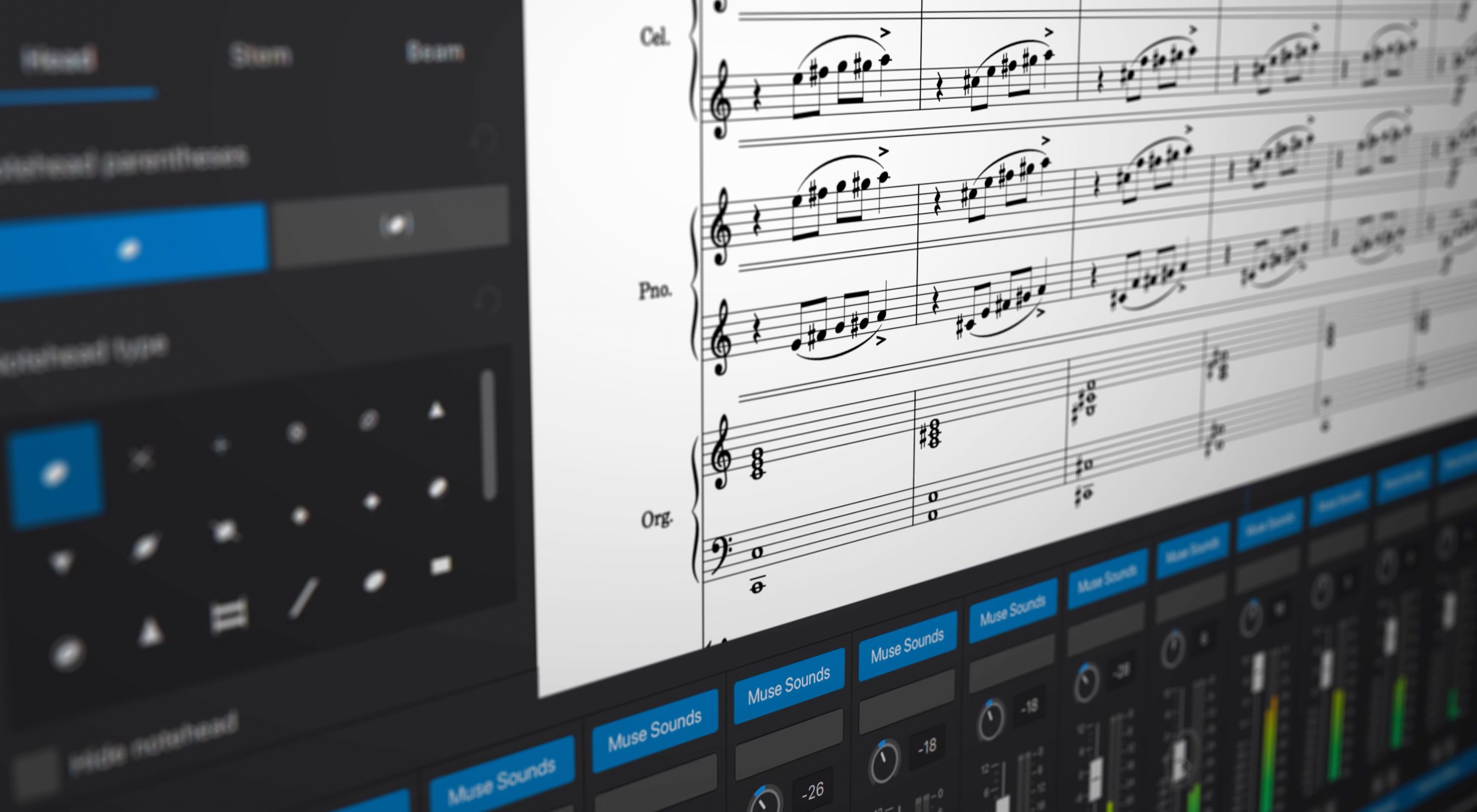Home>Production & Technology>Tempo>How To Change Music Sound Without Messing With Tempo


Tempo
How To Change Music Sound Without Messing With Tempo
Modified: January 22, 2024
Learn how to change the sound of music without affecting the tempo. Discover simple techniques to enhance your listening experience with this step-by-step guide.
(Many of the links in this article redirect to a specific reviewed product. Your purchase of these products through affiliate links helps to generate commission for AudioLover.com, at no extra cost. Learn more)
Table of Contents
Introduction
Music is an integral part of our lives, evoking emotions and setting the mood for various occasions. Whether we’re listening to a catchy pop tune or a soothing classical melody, the sound of music can greatly impact our overall experience. The tempo, or the speed at which a piece of music is played, plays a crucial role in shaping the feel and energy of a song.
However, there may be times when we wish to change the sound of music without altering its tempo. For instance, you may want to enhance the bass frequencies to make a song more energetic or add a touch of reverb to create a sense of space. Fortunately, with the help of modern audio production techniques, it is possible to manipulate the sound of music without messing with its tempo.
In this article, we will explore various techniques that allow you to change the sound of music while keeping its tempo intact. We’ll delve into different audio processing tools and effects that can shape the sonic characteristics of a song, allowing you to customize and enhance the listening experience according to your preferences. So, whether you’re a music enthusiast, a producer, or a DJ, read on to discover how you can alter the sound of music without compromising its tempo.
Understanding Music Sound and Tempo
Before we delve into the techniques for changing music sound, let’s first establish a clear understanding of what sound and tempo are.
Sound refers to the vibrations that travel through the air or any other medium, which are then detected and interpreted by our ears. It is a combination of various elements, including pitch, volume, and tone quality, that come together to create the unique characteristics of a musical piece.
On the other hand, tempo refers to the speed or pace at which a piece of music is played. It determines the rhythm and energy of a song and is typically measured in beats per minute (BPM).
Both sound and tempo contribute to the overall feel and emotion of a musical composition. While tempo sets the overall speed, sound is responsible for the specific timbre and sonic qualities of the instruments and vocals involved.
Now, let’s explore some techniques that will enable us to manipulate the sound of music without affecting its tempo.
Techniques for Changing Music Sound
When it comes to altering the sound of music, there are several techniques and audio processing tools at our disposal. Let’s take a closer look at some of the most effective methods:
- Equalization: Equalization, commonly known as EQ, is a fundamental tool in audio processing. It allows you to adjust the balance of frequencies in a sound source. By boosting or cutting specific frequency ranges, you can enhance or reduce certain elements of the music, such as bass, midrange, or treble.
- Compression: Compression is used to control the dynamic range of a sound. It helps to balance the volume levels of different elements in a music track. By reducing the dynamic range, you can bring out subtle details in softer sections and prevent any harsh peaks from overpowering the mix.
- Reverb: Reverb creates the illusion of space in a recording. It adds a sense of depth and ambiance to the sound, making it feel like it was recorded in a specific environment. With reverb, you can make a song sound like it was recorded in a small room, a concert hall, or even a cathedral.
- Delay: Delay creates echoes and repetitions of a sound. It can be used to add depth and create interesting rhythmic patterns. By adjusting the delay time, feedback, and other parameters, you can achieve various effects, from subtle slapback delays to cascading echoes.
- Pitch Shifting: Pitch shifting allows you to change the pitch of a sound without altering its tempo. It can be used to transpose a song to a different key or create unique vocal harmonies. Pitch shifting can add a creative touch to a musical arrangement and open up new possibilities for experimentation.
- Harmonic Enhancement: Harmonic enhancement techniques involve enhancing the harmonics of a sound to make it more powerful and vibrant. This can be achieved through various methods, such as saturation, harmonics excitation, or enhancer plugins. Harmonic enhancement can give your music a richer and fuller sound.
- Stereo Imaging: Stereo imaging techniques allow you to manipulate the width and placement of instruments within the stereo field. By adjusting the panning, stereo width, and spatial effects, you can create a sense of separation and depth, making the music sound more immersive and captivating.
These techniques provide a versatile toolkit for changing the sound of music while preserving its original tempo. Experimenting with different combinations and settings will allow you to create unique sonic landscapes and bring out the desired characteristics in your music.
Equalization
Equalization, or EQ, is a powerful tool that allows you to shape the frequency response of a sound source. It enables you to boost or cut specific frequency ranges to enhance or reduce certain elements in the music.
When using EQ, it’s important to understand the different frequency ranges and their corresponding characteristics. For example, boosting the low end can add warmth and depth to the sound, while reducing the high frequencies can tame any harshness or sibilance.
Most digital audio workstations (DAWs) come with built-in equalizer plugins that offer various filter types, such as high-pass, low-pass, band-pass, and parametric EQs. These tools allow you to precisely control the frequency response by adjusting parameters like gain, frequency, and bandwidth.
To use equalization effectively, it’s important to have a reference point and a clear goal in mind. Listen to the music and identify areas that could benefit from some frequency adjustment. For example, if you want to boost the bass, find the lower frequencies that correspond to the bass instruments and gently increase the gain in that range. Conversely, if you want to reduce the harshness of a vocal track, find the frequencies responsible for the harshness and cut them slightly.
Remember that subtlety is key when using equalization. Small adjustments can have a significant impact on the overall sound without making it sound unnatural or artificial. Don’t be afraid to experiment and trust your ears to guide you.
Equalization is a versatile technique that can drastically change the sound of music without altering its tempo. It allows you to shape the sonic characteristics of individual instruments and vocals, creating a more balanced and polished mix. With practice and experimentation, you can effectively enhance the sound of your music using equalization.
Compression
Compression is a crucial tool in audio production that enables you to control the dynamic range of a sound source. It helps to even out the volume levels of different elements in a music track, resulting in a more balanced and polished sound.
When a sound is compressed, the louder parts are reduced in volume while the softer parts are boosted, effectively reducing the overall dynamic range. This allows you to bring out subtle details in quieter sections and prevent any peaks from becoming too overpowering.
Compression works by setting a threshold level. When the audio signal surpasses that threshold, the compressor kicks in and begins reducing the volume according to the specific compression settings. These settings include parameters such as ratio, attack, and release.
The ratio determines the amount of compression applied. For example, a ratio of 4:1 means that for every 4 dB above the threshold, the output will only increase by 1 dB. The attack time dictates how quickly the compression responds when the sound exceeds the threshold, while the release time determines how long it takes for the compression to stop after the sound falls below the threshold.
When using compression, it’s important to strike a balance between controlling the dynamics and maintaining the natural feel of the music. Over-compressing can result in a flat and lifeless sound, while under-compressing can lead to inconsistent volume levels.
Applying compression to individual tracks, such as vocals, drums, or guitars, can help them sit better in the mix and bring out their nuances. Additionally, using compression on the master bus can help glue the entire mix together and enhance its overall cohesiveness.
Whether you’re aiming to add punch and consistency to a drum kit or control the dynamic range of a vocal performance, compression is an indispensable tool for changing the sound of music without affecting its tempo. By experimenting with different compression settings and understanding the impact it has on the overall mix, you can achieve the desired sonic characteristics for your music.
Reverb
Reverb is a vital audio effect that simulates the natural reflections of sound in a physical space. It adds depth, dimension, and a sense of space to the sound, allowing you to create a more immersive and realistic listening experience.
When applied to music, reverb can make the sound seem like it was recorded in a specific environment, such as a room, hall, or cathedral. By adjusting the reverb parameters, you can control the size, decay, and early reflections, shaping the character of the virtual space.
Reverb plugins come in various types, including hall, plate, room, and convolution reverb. Each type offers different sonic characteristics, allowing you to choose the type that best suits your music.
To add reverb to a sound source, insert a reverb plugin on the desired track or send the audio signal to a separate reverb bus. Adjust the reverb parameters, such as decay time, pre-delay, and wet/dry mix, to achieve the desired effect.
For example, if you want to create a sense of intimacy, you can use a shorter decay time to simulate a smaller room. On the other hand, if you’re looking for a more expansive and atmospheric sound, you can increase the decay time to simulate a larger space.
However, it’s important to exercise restraint when using reverb. Adding too much reverb can make the sound muddy and wash out the individual elements of the mix. Strive for a balance that enhances the overall sound without overpowering it.
Reverb is a versatile tool that can transform the sound of music, adding depth, space, and ambience. By experimenting with different reverb settings and understanding how they impact the overall mix, you can achieve a more immersive and captivating sound for your music.
Delay
Delay is a popular audio effect that creates echoes and repetitions of a sound. It can add depth, movement, and rhythmic interest to music, making it a powerful tool for altering the sound without affecting the tempo.
When you apply delay to a sound, it plays the original audio and then repeats it after a set amount of time. This repetition, or echo, can be adjusted to create different effects, from subtle slapback echoes to complex rhythmic patterns.
Delay plugins typically offer controls for adjusting the delay time, feedback, and mix level. The delay time determines how long it takes for the echo to be heard, while the feedback controls the number of times the echo is repeated. The mix level controls the balance between the original sound and the delayed sound.
Using delay creatively can produce interesting and dynamic results. For instance, applying a short delay to a vocal track can add depth and make it sound more spacious. On the other hand, using longer delay times with multiple repetitions can create a cascading effect that adds complexity and texture to a guitar solo or synth line.
It’s worth noting that using delay in conjunction with other effects can yield even more fascinating sounds. For example, combining delay with reverb can create a lush and atmospheric sound, while adding modulation effects to the delayed signal can produce swirling and ethereal textures.
When applying delay, it’s important to consider how it interacts with the other elements in the mix. Adjust the settings to ensure that the delay complements the overall sound without overpowering it. Also, be mindful of the timing and rhythmic elements, as delay can introduce syncopation and alter the perceived groove of the music.
Whether you’re aiming to add depth to vocals, create rhythmic patterns, or enhance instrumental solos, delay is a powerful tool for changing the sound of music. With experimentation and careful adjustment of delay settings, you can achieve captivating and unique sonic effects for your music compositions.
Pitch Shifting
Pitch shifting is a technique that allows you to alter the pitch of a sound without affecting its tempo. It opens up a world of creative possibilities, enabling you to transpose a song to a different key, create unique vocal harmonies, or add interesting melodic variations to your music.
With pitch shifting, you can change the frequency of a sound, effectively raising or lowering its pitch. This can be done in real-time using pitch shifter plugins or offline with the help of audio editing software.
When using pitch shifting, it’s important to be mindful of the potential artifacts that may occur. Extreme pitch shifting can introduce digital artifacts and degrade the overall sound quality. However, with moderate adjustments, you can achieve seamless and natural-sounding pitch shifts.
In addition to transposing entire tracks or instruments, pitch shifting can also be used to create harmonies. By duplicating a vocal track, shifting its pitch, and blending it with the original, you can generate beautiful vocal harmonies and enrich the overall sound of the music.
Keep in mind that pitch shifting doesn’t have to be limited to vocals or melodic instruments. You can experiment with shifting the pitch of drum samples, sound effects, or even ambient textures to add unique sonic elements to your compositions.
When using pitch shifting, it’s important to consider the musical context and ensure that the shifted pitch fits harmonically with the rest of the arrangement. Pay attention to the intervals and overall tonality of the music to maintain a cohesive and musically pleasing result.
Pitch shifting is a powerful technique for changing the sound of music without altering its tempo. By exploring different pitch shifting options and experimenting with various musical elements, you can unlock new creative possibilities and add a unique touch to your musical compositions.
Harmonic Enhancement
Harmonic enhancement techniques focus on enriching the harmonics of a sound, making it sound more vibrant and powerful. It is a valuable method for changing the sound of music, offering a way to improve the overall tonal balance and clarity of individual instruments or the mix as a whole.
There are various approaches to harmonic enhancement, including saturation, harmonics excitation, and enhancer plugins. These techniques work by adding additional harmonics to the original sound, enhancing its richness and presence.
Saturation is a widely used technique that emulates the analog warmth and distortion of vintage audio gear. It adds harmonics to the audio signal, creating a thicker and more saturated sound. Saturation can be applied subtly to individual tracks to add a touch of warmth or more aggressively to create gritty and distorted effects.
Harmonics excitation aims to enhance the existing harmonics in a sound source. It emphasizes and accentuates the upper harmonics, making the sound more pronounced and cutting through the mix. This technique is particularly useful for instruments like guitars and vocals, allowing them to stand out and have a greater impact.
Enhancer plugins are specifically designed to enhance the harmonics and tonal characteristics of a sound. They often offer a range of controls to adjust the amount of enhancement and the specific frequency ranges affected. Enhancers can bring out the clarity and detail in a sound, making it sound more defined and vibrant.
When applying harmonic enhancement, it’s important to exercise caution and avoid overdoing it. It’s easy to fall into the trap of adding too much processing, which can lead to an unnatural and exaggerated sound. Use your ears as a guide and make subtle adjustments to achieve a balanced and enhanced sound.
Harmonic enhancement is a powerful tool for changing the sound of music, allowing you to bring out the best qualities of individual instruments and add depth and richness to the overall mix. By applying these techniques strategically, you can elevate the impact and sonic presence of your music compositions.
Stereo Imaging
Stereo imaging techniques offer a way to manipulate the width and placement of instruments within the stereo field. It allows you to create a sense of separation and dimension, making the music sound more immersive and captivating.
In a stereo mix, sounds can be positioned anywhere between the left and right speakers, creating a sense of depth and space. By adjusting the stereo image of individual tracks, you can emphasize specific elements and create a more balanced and dynamic mix.
One common technique for stereo imaging is panning. By adjusting the panning of a track, you can place the sound source anywhere between the left and right channels. For example, panning a guitar track slightly to the left and a keyboard track slightly to the right can create a spacious and balanced stereo image.
Another useful technique is stereo width adjustment. This involves manipulating the stereo width of a sound, making it sound wider or narrower. This can be achieved with the help of stereo imaging plugins or by using techniques such as mid-side processing. By widening specific elements of the mix, you can create a more engulfing and expansive sound.
Spatial effects, such as chorus or stereo reverb, can also enhance the stereo image. These effects add modulations and reflections that widen the sound and create a sense of movement and depth. Careful use of spatial effects can give the illusion of a wider and more three-dimensional soundstage.
When applying stereo imaging techniques, it’s important to consider the overall balance and the intended effect. Not all elements in the mix need to be spread across the entire stereo field. Leaving some elements centered can anchor the mix and provide a solid foundation.
Additionally, it’s crucial to maintain mono compatibility. While stereo imaging can enhance the listening experience on stereo systems, it’s essential to ensure that the mix still translates well when played in mono. Checking the mono compatibility of your mix can help avoid any phase cancellation issues that may occur with excessive stereo widening.
Stereo imaging provides a powerful toolset for changing the sound of music. By panning tracks, adjusting the stereo width, and implementing spatial effects, you can create a more immersive and engaging listening experience. A well-crafted stereo image can bring out the details in your mix and make your music come alive.
Conclusion
Changing the sound of music without messing with the tempo opens up a world of possibilities for producers, musicians, and audio enthusiasts. By utilizing techniques like equalization, compression, reverb, delay, pitch shifting, harmonic enhancement, and stereo imaging, you can shape and transform the sonic characteristics of a song to create a more personalized and captivating listening experience.
Equalization allows you to adjust the balance of frequencies, while compression controls the dynamic range of the sound. Reverb adds depth and ambiance, while delay creates echoes and repetitions. Pitch shifting enables you to change the pitch without altering tempo, and harmonic enhancement enhances the richness and presence of the sound. Finally, stereo imaging manipulates the width and placement of instruments within the stereo field.
These techniques provide a versatile toolkit for enhancing and customizing the sound of music according to your preferences. However, it’s important to use them judiciously and trust your ears to guide your decisions. Subtle adjustments and careful balancing are key to achieving a natural and polished sound.
Remember to consider the musical context and the intended effect when applying these techniques. Each tool serves a specific purpose and can contribute to the overall sonic landscape. Experimentation is crucial in discovering the unique combinations and settings that work best for your music.
By mastering these techniques and understanding how they interact with one another, you can unlock endless possibilities for creativity and sonic expression. Whether you’re a producer aiming to create professional mixes, a musician looking to enhance your live performances, or an audio enthusiast seeking a more immersive listening experience, the ability to change the sound of music without altering tempo is a valuable skill that will elevate your musical journey.











